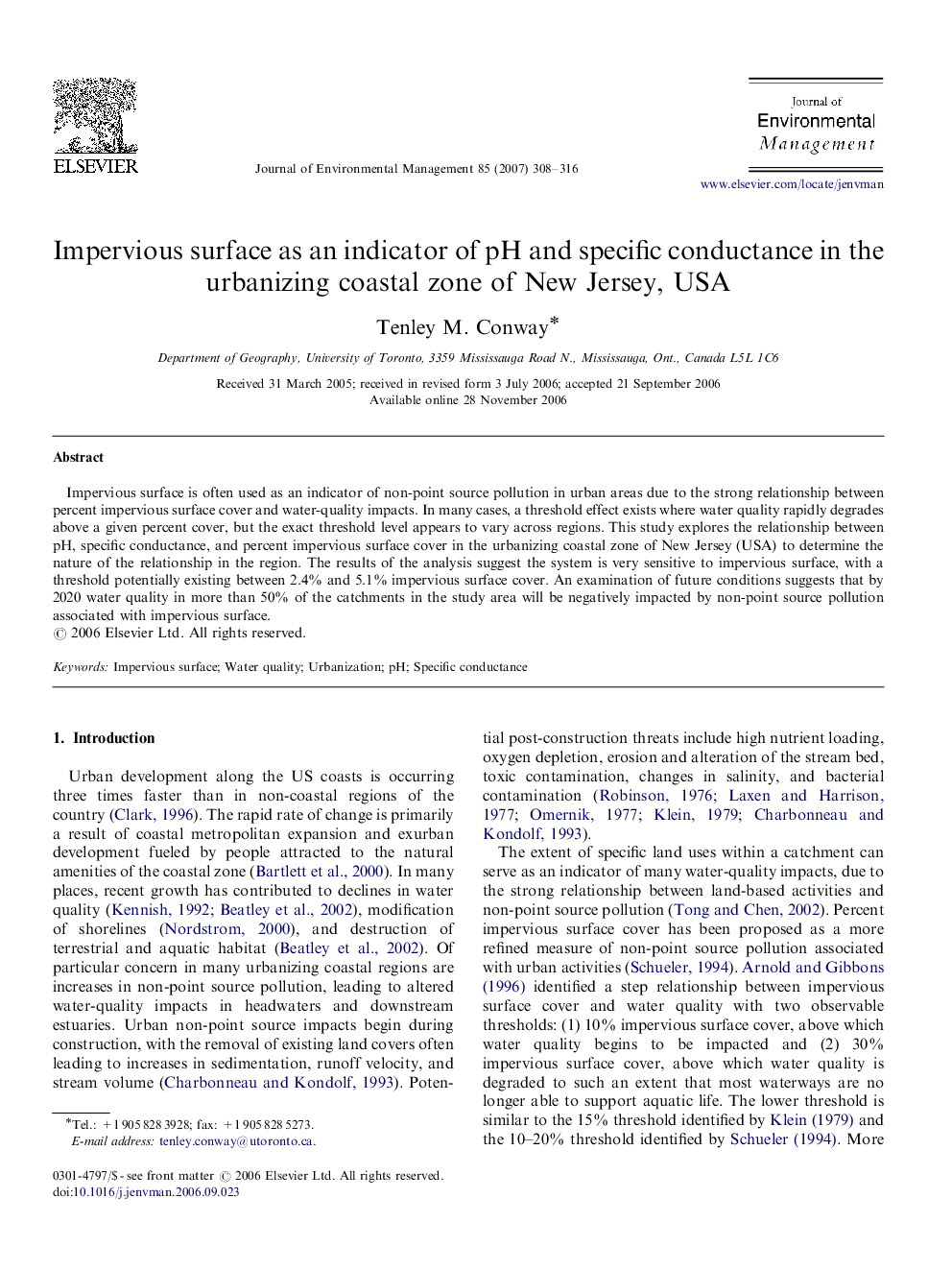| Article ID | Journal | Published Year | Pages | File Type |
|---|---|---|---|---|
| 1058781 | Journal of Environmental Management | 2007 | 9 Pages |
Impervious surface is often used as an indicator of non-point source pollution in urban areas due to the strong relationship between percent impervious surface cover and water-quality impacts. In many cases, a threshold effect exists where water quality rapidly degrades above a given percent cover, but the exact threshold level appears to vary across regions. This study explores the relationship between pH, specific conductance, and percent impervious surface cover in the urbanizing coastal zone of New Jersey (USA) to determine the nature of the relationship in the region. The results of the analysis suggest the system is very sensitive to impervious surface, with a threshold potentially existing between 2.4% and 5.1% impervious surface cover. An examination of future conditions suggests that by 2020 water quality in more than 50% of the catchments in the study area will be negatively impacted by non-point source pollution associated with impervious surface.
